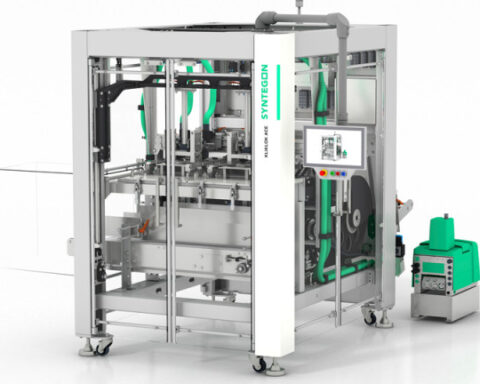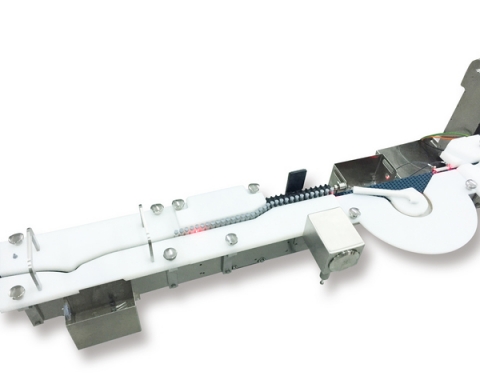As pharmaceutical manufacturers move towards small batch production, process flexibility is increasingly critical to minimize changeover times and maintain – or increase – profitability. Two factors continue to drive the rising demand for process flexibility. One is biopharmaceutical manufacturers’ focus on developing novel therapeutics that target smaller patient populations, thus driving the need for small batch production. The other is real estate: As it becomes more difficult to access capital to finance plant expansions, companies are experiencing a shortage of available floor space. As a result, manufacturers must increase productivity by getting more out of fewer machines.
Pharmaceutical processing and packaging suppliers answer this call for technologies that can accommodate multiple product runs and smaller batches with a variety of solutions to enhance operational flexibility. Pharma EXPO 2015 (Sept. 28–30; Las Vegas Convention Center)will feature a wide range of these technologies.
[wp_ad_camp_2]Co-produced by PMMI, The Association for Processing and Packaging Technologies, the owner and producer of the PACK EXPO portfolio of trade shows, and the International Society for Pharmaceutical Engineering (ISPE), Pharma EXPO will take place alongside PACK EXPO Las Vegas, spotlighting solutions for the entire pharmaceutical, nutraceutical and medical device supply chains. Together, the two shows will feature 2,000 exhibitors, span more than 800,000 square feet of space, and attract 30,000 attendees.
Slow is the New Fast
As drugs become increasingly personalized, pharmaceutical and biopharmaceutical manufacturers must reduce batch sizes and changeover times between different product runs. Additionally, drug makers are also moving towards more potent formulas that can be costly to replenish in the event of a line interruption.
“There aren’t as many blockbuster products that require big runs,” says John Erdner, vice president of sales and marketing, PennTech Machinery Corporation. “It’s about frequency of runs, not speed. In the past 600 vial per minute lines were developed to accommodate batch sizes in excess of 100,000 vials but these lines required a long time to clean, changeover and decontaminate between production runs.”
“Now batch sizes of 1,000 to 10,000 vials are more common and the focus today is to run these batches more efficiently (higher yields) with less time required between batches. Slower speed lines (100 – 200 vials per minute) can accommodate component variations better to improve line efficiencies, and net weigh filling techniques can minimize product waste during set up and end of the batch run out.”
Minimizing changeover time is also a crucial component to improve line capacities with smaller batch sizes. At Pharma EXPO, PennTech will showcase its new external vial washer. To optimize cleaning and product quality, this machine uses a vial transfer belt to form a watertight seal around the cap to block out moisture as the vials move through the high-pressure spray nozzles.
This model is an example of using technology to improve changeover time. The machine uses tool-less quick-release infeed and exit feed screws. The external washer is completely servo driven to control vial movement and position adjustments in relationship to cleaning and drying nozzles. Therefore the critical parameters of the process are easily validated and repeatable while adjustments are recipe driven for consistency and further reducing changeover time.
Reinserting the “Human” Element
Brevetti C.E.A. (Booth #N-509), a provider of inspection machines, offers a line of fully customizable inspection solutions that add a “human” element to automatic visual inspections to reduce false rejection rates.
“The advancement came about as a process improvement,” says Susan Calabrese, USA sales manager, Brevetti C.E.A. “It mimics the human inspection capability by handling the container the same way a human would, examining it at different angles.
Brevetti will demonstrate the A1 Human-like Inspection Machine at Pharma EXPO. Available as a 4- or 6-axis robot, this machine can conduct particle inspection and re-check rejects from other semiautomatic lines at up to 50 containers a minute. Its software includes a new off-line setup mode that allows the parameters optimization phase to take place completely off-line.
Versatility is a Must-Have
Smaller batch runs of multiple products command greater versatility throughout the production line and everywhere in between — even in clean-in-place (CIP) equipment. Sani-Matic, Inc. (Booth #N-508) will feature its UltraFlow Portable CIP systems at Pharma EXPO. Self-contained, compact and portable, these CIP systems work with a variety of single-use, re-circulated CIP applications.
The UltraFlowportable cleaning system features a small footprint and space-saving design, making it usable with different pieces of process equipmentand easy to transport throughout the plant. The system can be used to clean a variety of pharmaceutical process items including bioreactors, fermenters, centrifuges, media tanks, holding tanks, IBCs (intermediate bulk container), fillers and storage tanks.
“A huge benefit of the UltraFlow pharma is that it can operate with minimal draw on utilities. For example, it utilizes approximately 20 percent less water supply than conventional CIP equipment,” says Chris McNulty, pharmaceutical and biotech sales manager of Sani-Matic, Inc.
[wp_ad_camp_4]The design of the UltraFlowsystem allows for a high-turbulence flow rate and self-cleaning capabilities.
“Our customers gain considerable savings as a result of treating fewer gallons of water with chemicals and managing less waste,” says McNulty.
Smaller, more versatile equipment is also an important solution to the challenge presented by the shrinking amount of available floor space.
“Manufacturers are doing shorter runs and need to deploy equipment capable of managing those changes without purchasing a whole new line. Machinery footprints are shrinking as space now comes at a very high premium,” says Ed McGovern, vice president of sales and business development, North America at Piab (Booth #C-3129 in PACK EXPO).
Piab, a provider of innovative vacuum solutions, recently adapted its modular conveying solution to accommodate these market dynamics. The piFLOW® system incorporates the company’s new COAX® technology, which allows for the design of a flexible, modular and efficient vacuum system. While the COAX design was previously introduced, Piab has developed a new vacuum conveyor pump range using the technology that significantly improves operator ability to adjust the system “on the fly”. With the new COAX pumps, operators can add capacity by adding vacuum cartridges to the existing pump. This eliminates the need in many cases for a different conveyor when application parameters change, enabling greater flexibility and reduced changeover.
With this system, manufacturers can easily modify the installation to address increases in conveying distance and changes in plant layout. The piFLOW system can also run multiple products on the same line, allowing significant time and cost savings. Additionally, the piFLOWsystem’s COAX technology enables three times more vacuum flow than conventional systems, while reducing energy consumption. piFLOW also features a small footprint on the plant floor, allowing manufacturers to utilize their space in a more cost efficient way. The system also has very few moving parts to minimize service and maintenance time.
Efficiency is the Goal
For applications in tablet production, manufacturersmust contend with different formats, batch sizes and tablet types, making it difficult to accommodate multiple products on the same press. Regardless, suppliers are helping manufacturers do just that in an effort to streamline efficiency on the line.
[wp_ad_camp_2]“Efficiency is the name of the game now. Manufacturers are looking to get maximum leverage out of their machinery investments, and real estate within facilities is becoming scarce. As a result, companies seek machinery that can be used for multiple purposes while increasing uptime,” says Matt Bundenthal, direct sales and communications manager of Fette Compacting (Booth #N-519).
As part of its effort to provide the highest possible productivity with all product formats and batch sizes, Fette Compacting offers the FE Series, a portfolio of tailored tablet presses for virtually every tableting application. The machines deliver maximum performance by streamlining three main areas: operation, changeover and maintenance.
The FE series also redefines the relationship between output and size. For example, one of the machines in the series, the FE55 tablet press, offers nearly double the output for the amount of floor space it occupies than any other machine in its class. The FE55 also allows for the production of both single-and bi-layer tablets, while making provisions for direct compression applications. An additional, third compression station can be added for complex products that need to be pressed for longer periods of time.








